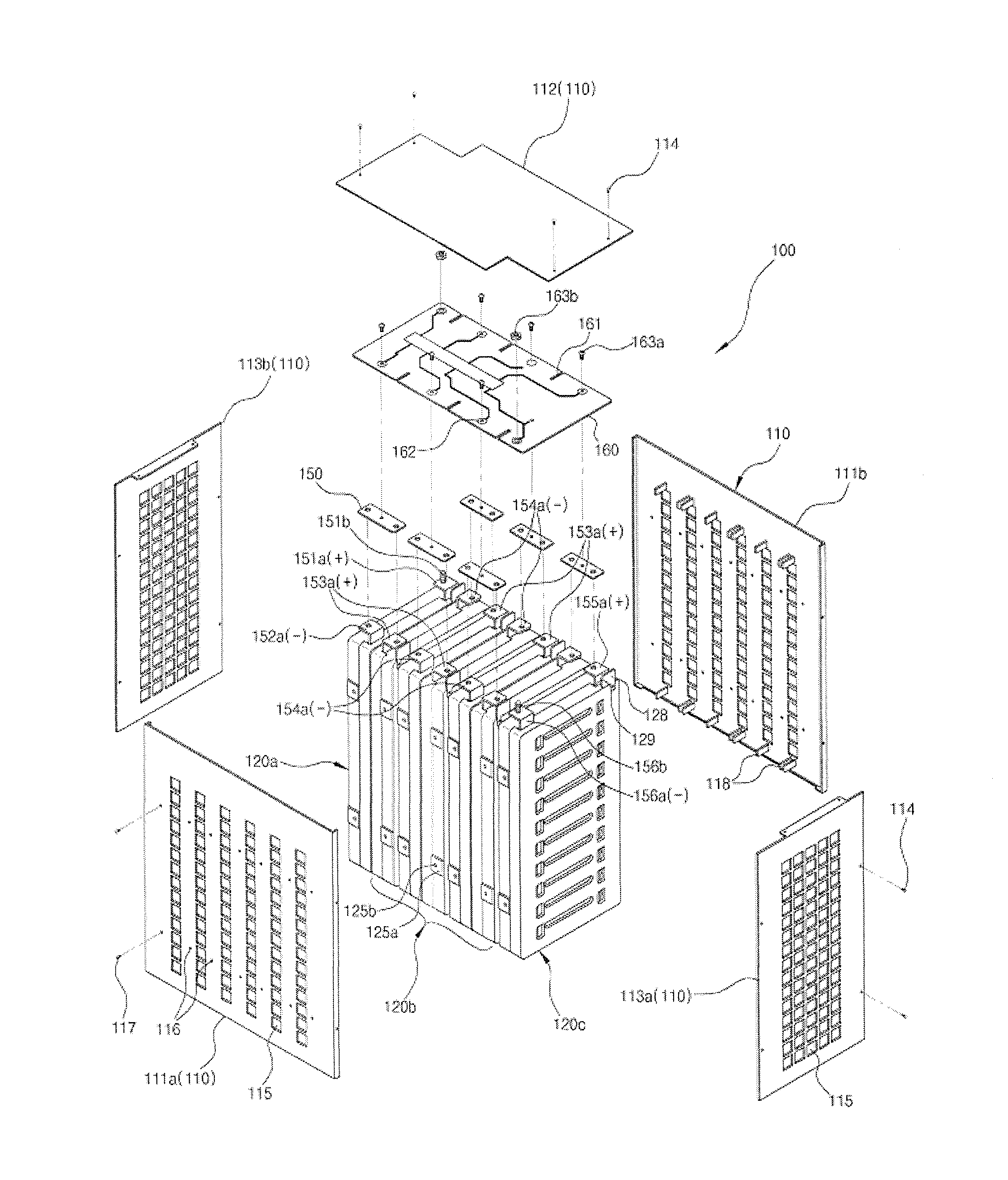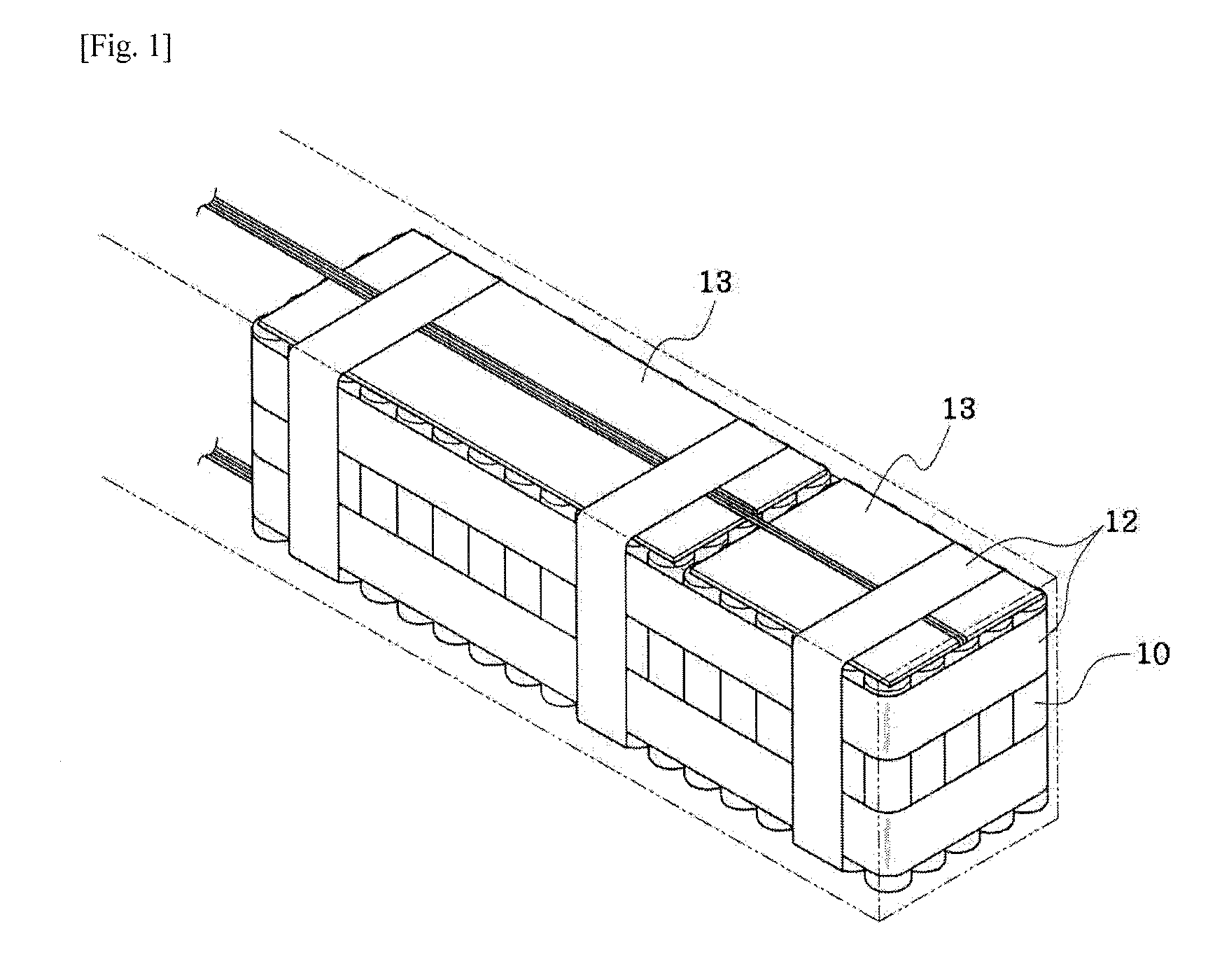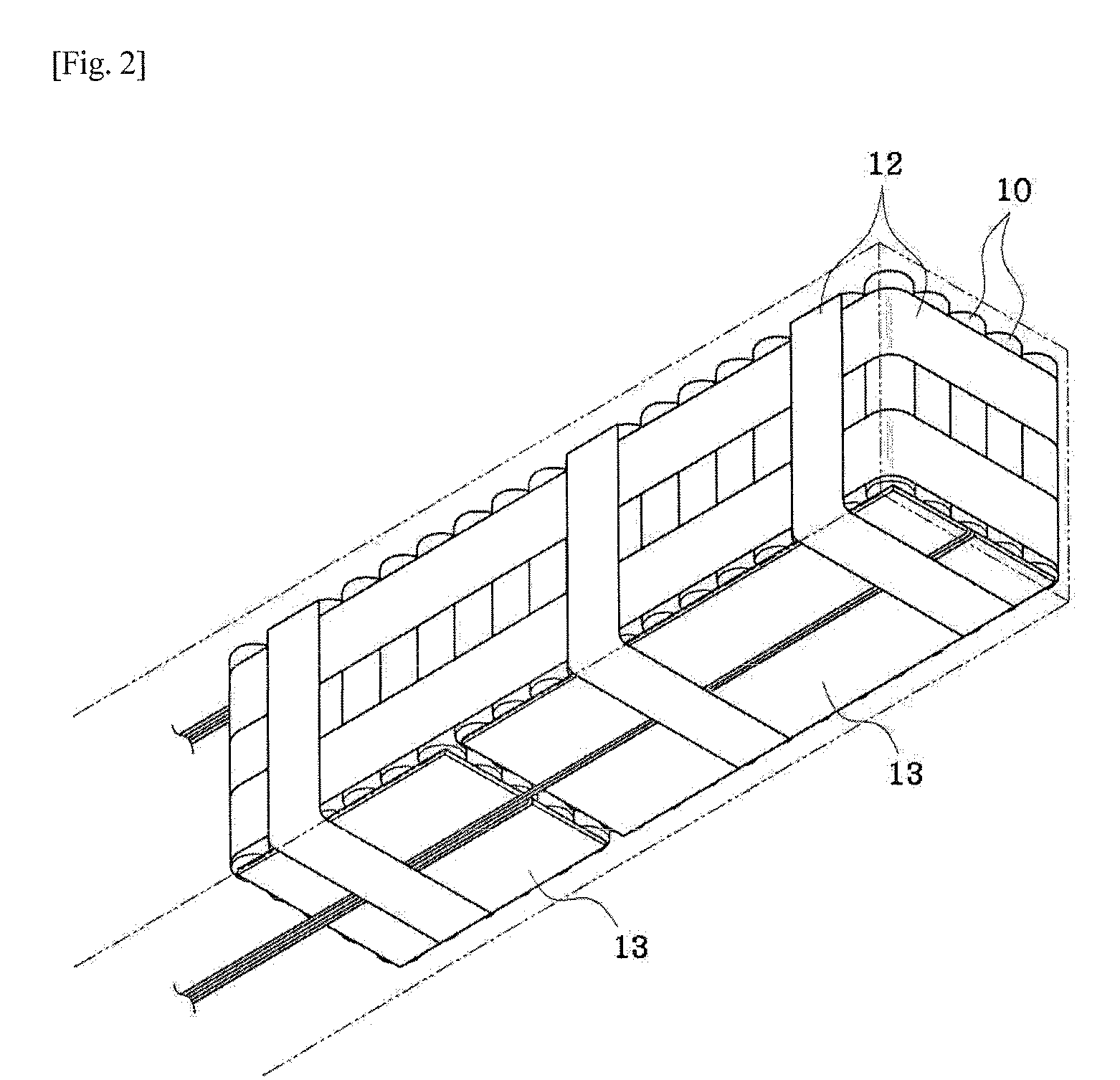Instrument connection type unit pack combined cell cartridge
a cell cartridge and instrument connection technology, applied in the field of cell cartridges, can solve the problems of high processing time, inability to meet the standards of battery packs, and a large number of defects, and achieve the effects of preventing the temperature of cells, reducing production costs, and reducing production costs
- Summary
- Abstract
- Description
- Claims
- Application Information
AI Technical Summary
Benefits of technology
Problems solved by technology
Method used
Image
Examples
Embodiment Construction
[0048]Hereinafter, preferred embodiments of the present invention will be described in detail with reference to the accompanying drawings.
[0049]A unit pack-combined cell cartridge in accordance with a preferred embodiment of the present invention is characterized in that a plurality of cells are connected together using an instrument (i.e., bus bar) to configure a unit pack, and a plurality of unit packs are connected together using an instrument (i.e., intermediate conductive plate) to configure the cell cartridge, in which all of the unit packs are connected and fastened only by the instruments without cables and connectors.
[0050]In the unit pack-combined cell cartridge of the present invention, the cells and the unit packs are connected by an instrument for facilitating the connection and disconnection, and thus the assemblability and productivity are significantly improved. Moreover, it is possible to easily control the voltage and current capacity by appropriately controlling t...
PUM
 Login to View More
Login to View More Abstract
Description
Claims
Application Information
 Login to View More
Login to View More - R&D
- Intellectual Property
- Life Sciences
- Materials
- Tech Scout
- Unparalleled Data Quality
- Higher Quality Content
- 60% Fewer Hallucinations
Browse by: Latest US Patents, China's latest patents, Technical Efficacy Thesaurus, Application Domain, Technology Topic, Popular Technical Reports.
© 2025 PatSnap. All rights reserved.Legal|Privacy policy|Modern Slavery Act Transparency Statement|Sitemap|About US| Contact US: help@patsnap.com



